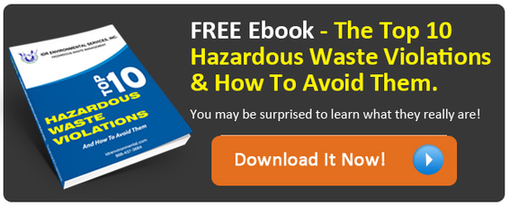Evaluate Your Hazardous Waste Operations, New Standards May Lead To Savings
In case you missed it, the Environmental Protection Agency (EPA) recently issued new hazardous waste disposal standards for companies that use disposable and reusable solvent contaminated industrial wipes. The rulings came down on July 31, 2013 and will affect many businesses. These new rules stretch EPA’s reach further than usual and require compliance from facilities that may not be used to EPA regulation. The new regulations lay out the requirements for handling solvent contaminated wipes in order to avoid the more complex and costly hazardous waste rules, which would otherwise apply.
This issue is important because most industrial and commercial facilities use paper or cloth towels to clean parts, products or equipment. If the facility uses wipes to apply cleaning solutions that can be characterized as hazardous waste when disposed the wipes themselves become a hazardous waste stream. This has been an issue for many years because the EPA originally refused to provide clarity. The EPA deferred this issue to state regulators for many years, leading to a complicated and unclear set of requirements.
New Guidelines for Solvent Contaminated Wipes
The new rules only apply to wipes contaminated with solvents that would be characterized as hazardous wastes if disposed. These include certain specific listed solvents as well as solvents that meet EPA’s test for hazardous characteristics such as ignitability, corrosivity or toxicity. Facilities can avoid handling solvent-contaminated industrial wipes as hazardous waste if they:
-
Store wipes for a limited time in leak-proof containers
-
Ensure that free liquid is removed from the wipes before disposal or reuse
-
Use an appropriate disposal facility, and
-
Document that they followed these steps
The rules separate solvent-contaminated wipes into two categories: reused and disposed. EPA exempts wipes sent for cleaning and reuse from the definition of “solid waste” (and as a result from being a hazardous waste) because they are not “disposed” and have commercial value that encourages reuse. EPA excludes wipes sent for disposal from the definition of hazardous waste, because they present no significant risk of allowing a release of the solvents they contain so long as they are managed and disposed according to the regulations. The only exceptions to the disposable wipes rule are wipes contaminated with trichloroethylene (TCE), which the EPA deems too risky even if managed according to the requirements.
The waste management requirements are identical for both categories. Used solvent-contaminated wipes must be stored in leak-proof, labeled containers with close-fitting but not locking covers. Wipes can only be stored on site for 180 days, with the accumulation date beginning when the first wipe is placed in the container. When the wipes are removed from the containers for reuse or disposal, the facility must take steps to ensure that the wipes contain no free liquid before being transported for disposal or reuse. Drying methods can include centrifuges, mechanical wringing, screen bottom containers, etc.
Reusable wipes can only go to industrial laundries or other cleaning operations that discharge to a publicly owned treatment works. Disposable wipes can only go to a permitted municipal solid waste landfill, a hazardous waste landfill or to a permitted solid waste or hazardous waste incinerator.
Documentation Requirements Eased
While facilities are not required to submit reports directly to EPA, they must maintain documents showing compliance with accumulation time, efforts to ensure removal of free product and the facility to which the wipes were sent for reuse and disposal.
The new rules are easier than RCRA hazardous waste requirements; however they still require a high level of management and we urge companies to review their processes to find potential hidden savings. A licensed hazardous waste company can evaluate your workflow and potentially find hidden savings. Stay connected and informed by subscribing to our newsletter.


Comment